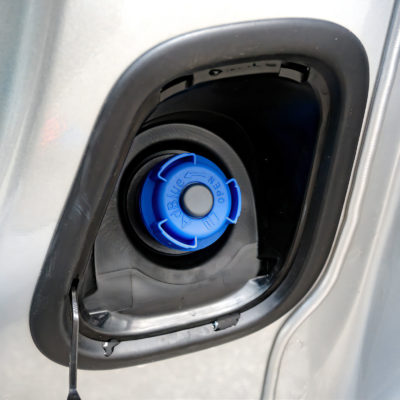Your SCR system and AdBlue FAQ’s answered by Forté
Always wondered what AdBlue is? Or perhaps how the SCR system works? We’ve compiled a collection of your most frequently asked questions surrounding the SCR system and AdBlue. In this blog, we’ll be answering all these questions and more using our expert knowledge and years of experience in helping and advising garages on how to make a noticeable difference to a vehicle’s performance and enhancing customer satisfaction.
Let’s start off simple with what the SCR system and AdBlue are.
What is SCR – Selective Catalytic Reduction?
Selective Catalytic Reduction (SCR) is an advanced active emissions control technology system that injects a liquid- reductant agent through a special catalyst into the exhaust stream of a diesel engine. The reductant source is usually DEF (Diesel Exhaust Fluid) – AdBlue.
What is DEF / AdBlue?
Diesel Exhaust Fluid (DEF) or AdBlue is used to reduce harmful gases being released into the atmosphere. AdBlue is a 32.5% solution of high-purity, synthetically manufactured urea in demineralised water. It is a safe-to-use fluid.
AdBlue causes a chemical reaction that converts nitrogen oxides into nitrogen, water and tiny amounts of carbon dioxide (CO2), natural components of the air we breathe, which is then expelled through the vehicle tailpipe. It works to protect the vehicle from any contamination that could cause serious damage.
Now moving on to how these both work…
What is the consumption of AdBlue?
AdBlue is injected in a percentage of 3-5% compared to diesel, so consumption is approx 1.5 litres per 650 miles.
How does the SCR system work?
As exhaust gases pass through the SCR cat, the system reads gas temperature and NOx amounts. It calculates the exact quantity of AdBlue to be injected into the system. AdBlue is injected in the exhaust gas before passing it through the catalyst. At a temperature between 300-400°C, a chemical reaction between AdBlue and NOx in exhaust gases reduces NOx (NO and NO2) to N2.
The majority of questions around SCR systems and AdBlue focus on the problems that may occur. Let’s address these…
What problems occur with SCR Systems?
If the temperature is above 400°C, urea will burn rather than reacting with NOx, which will lead the system to be ineffective. If the temperature is below 270°C, the reaction rate will be low and the ammonium sulphates formed will destroy the catalyst and block the injector.
What problems occur with AdBlue?
AdBlue is a mixture of water and 32.5% of urea, so it shows us four problems; the fluid is very corrosive, it freezes at -11oC and can form crystals when the temperature of operation is below 260oC. It also expires after 12–18 months of manufacture. Remember that by using incorrect or low quality AdBlue that does not follow manufacturers standards, can cause costly repairs to the vehicle.
To help prevent AdBlue system failure, we’ve created the Exhaust Crystal Preventer. Here’s a few questions and answers we’ve addressed surrounding our product and how to properly use it in order to get the most out of it.
What is the dosage rate of the product?
One 150ml bottle will treat all light vehicle tanks up to 20 litres.
Can I overdose the system?
It is recommended to only use one 150ml bottle of treatment per tank of Adblue. Increasing the dosage is not necessary.
What is the minimum dosage rate of the treatment?
When adding Exhaust Crystal Preventer at service, this can be added directly to the Adblue tank at any level. Working on an average, when the 1500-mile warning has triggered, there should be around 3.5 litres of Adblue remaining in the tank. Where the warning has been triggered the AdBlue tank should be filled, and one treatment added.
I’ve topped-up the Adblue tank, but the warning light is still present on the dashboard. What should I do?
When the tank is low, crystals can form around the level sensor preventing the movement to register the tank has been filled. Fill the tank with Adblue and add 1 x Exhaust Crystal Preventer. Over the next hundred miles the level sensor should clear and the system should register the fill. If not, further investigation of the tank sensor will be required.
Will Exhaust Crystal Preventer remove crystals already in the system?
Yes, adding Exhaust Crystal Preventer to the Adblue tank will remove light crystals already present in the Adblue and exhaust system. Where crystals have formed and the engine management light is illuminated, the fault must be rectified first and Exhaust Crystal Preventer is added as a preventative treatment, after repair.
We hope we’ve addressed all your queries surrounding the SCR system and AdBlue and feel more confident dealing with these issues in your garage when the time comes. Check out our Exhaust Crystal Preventer to help prevent AdBlue failure and follow our guides in this blog for proper usage and more.

